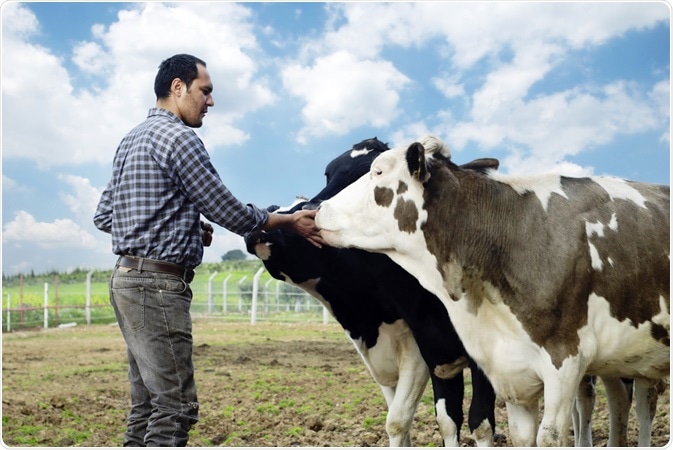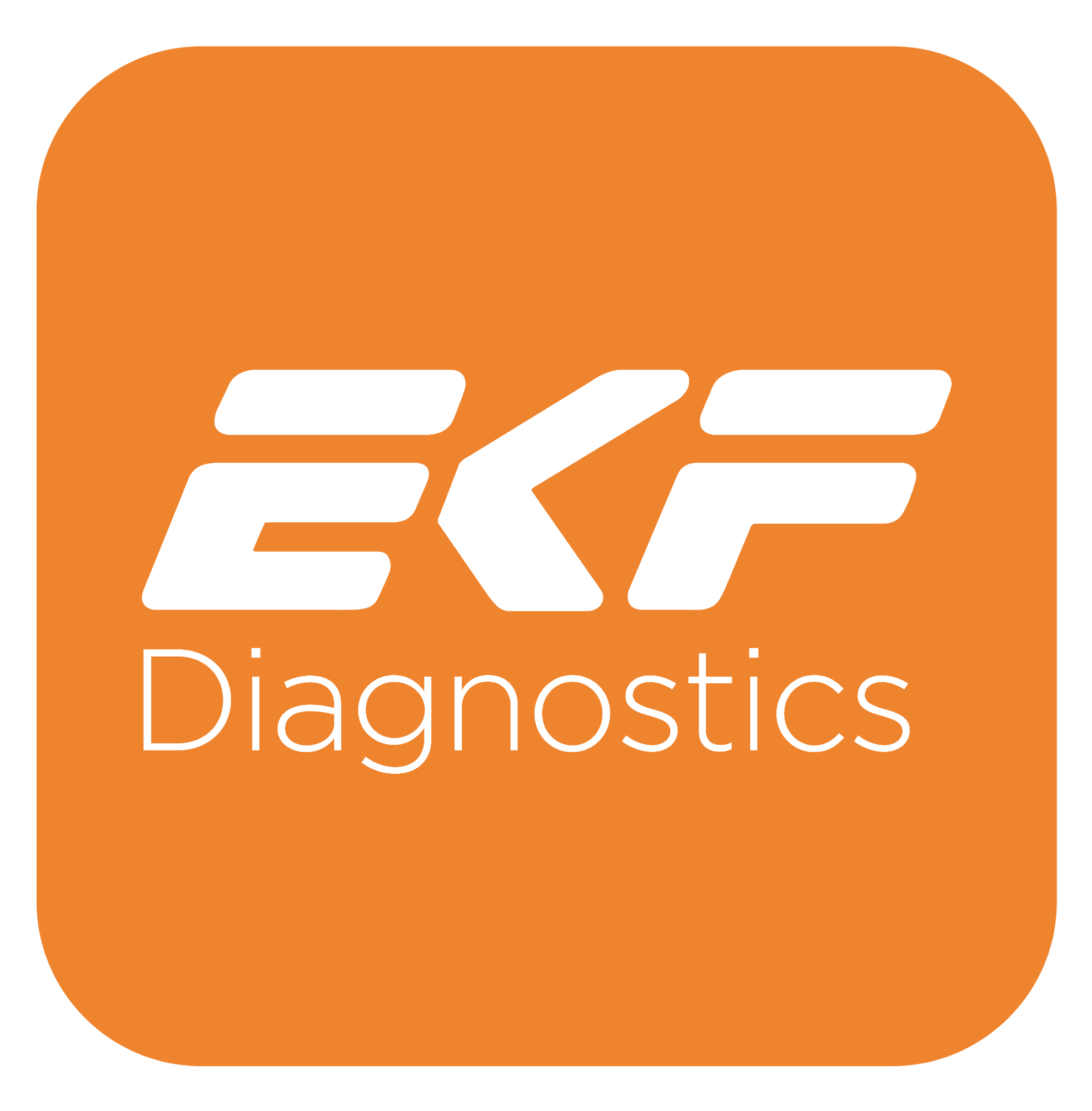Research has indicated that it is extremely useful to measure lactate concentrations in cattle. The new methods available to veterinarians and farmers in order to achieve reliable and quick results without leaving the animal’s side are discussed in this article.

Image credit: Mr.Exen/shutterstock.com
Applications of Lactate Concentration Measurement in Cattle
Serving as an important prognostic marker in the fields of both veterinary and human medicine, lactate is a product of anaerobic metabolism.
Tissue hypoxia, caused by local or systemic hypoperfusion and/or poor oxygen delivery, can cause lactate levels to increase (hyperlactatemia)1,2. Measurements of blood lactate can indicate the degree to which oxygen is being transported adequately around the body. This offers ways of assessing the severity of pulmonary or cardiovascular disease, how the body responds to treatment, and the ability to predict health outcomes and influence decisions regarding the improvement of survival prospects3,4.
Measuring the concentrations of lactate in cattle is a way of assessing the severity of a number of conditions including neonatal diarrhea, respiratory disease, and displacement of the abomasum (a ruminant’s fourth stomach).2
Lactate has been utilized more recently in order to assess the fitness of pregnant cows in comparison with non-pregnant cows. With this information, farmers can judge whether a cow is fit enough to calf again. They are also able to compare cows which have exercised with those which haven’t, allowing animal welfare and agricultural inspectors to analyze how much exercise a cow has had recently.
Furthermore, research has indicated that new-born calves which require assisted delivery as a result of dystocia (abnormal labor) have higher lactate levels when compared with calves that do not require such assistance.2 It has been shown that APGAR – a scoring system designed to assess the health of new-born calves – negatively correlates with blood lactate levels2.
Measuring Lactate Concentrations in Cattle
For the diagnosis and prognosis of a variety of diseases and conditions in veterinary medicine, lactate analysis is being increasingly performed5. Historically, in the laboratory, serum/plasma samples have been used to measure lactate. However, the entire blood lactate concentration can be monitored in real-time while beside the animal, courtesy of the increased availability of hand-held lactate analyzers for on-the-spot, point-of-care (POC) analysis6.
Although the prognostic value of the blood lactate level in ruminant medicine has not been widely documented, its reliability has been validated in two recent studies.
Case Study: Lactate Measurement in Cows at Freie Universität Berlin
Blood afflicted with a number of bovine conditions – including parturition (the process of giving birth) and dystocia – was measured by researchers at the Faculty of Veterinary Medicine at the Freie Universität Berlin2.
Factors which influence measures of lactate in dairy cows were compared by the researchers. These included different techniques and different anticoagulants. The reliability and accuracy of the Lactate Scout hand-held device from EKF Diagnostics was then tested by the researchers, and compared with a standard, laboratory lactate analysis method.
These tests indicated no difference in the concentration of lactate using lithium heparin blood samples when either the standard laboratory method or the Lactate Scout was used.
The conclusion of the study is that using lithium heparin as an anti-coagulant with the Lactate Scout constitutes a useful tool for reliable, easy, and accurate blood lactate measurement in calves and cows, while remaining by the animals’ side2.
Case Study: Lactate Measurement in Sheep at Ataturk University in Turkey
The Lactate Scout’s use as a POC instrument for the measurement of blood L-lactate concentration in sheep was studied by researchers at the Faculty of Veterinary Medicine at the Ataturk University, Turkey1.
Various ages of sheep with a range of diseases were assessed during the study. Plasma lactate measured with the Cobas autoanalyzer was used as a standard laboratory reference, against which researchers compared blood lactate measured with the Lactate Scout.
The study concluded that the precision of the Lactate Scout was 99% when compared with the reference method, and its accuracy 98%. The Lactate Scout was deemed to be a reliable POC analyzer for the assessment of lactate levels in ovine medicine.
EKF Diagnostics Lactate Scout
The Lactate Scout can be used as a diagnostic and prognostic tool in veterinary medicine, obtaining fast, reliable, and cost effective results by the animals’ side5.
As only three steps are involved, the Lactate Scout is a convenient and simple device. Firstly, the sensor is removed and placed into the analyzer. Secondly, flesh is pricked, and finally, the blood is collected by touching it with the sensor. Results are generated after a delay of only 10 seconds8. Just 0.2 µl of capillary blood is required and as many as 250 results can be stored on the device.
References
- Baydar et al (2015). Reliability of the Lactate Scout point-of-care instrument for the determination of blood L-lactate concentration in sheep. Veterinary Clinical Pathology.; 44: 559–563 https://onlinelibrary.wiley.com/doi/abs/10.1111/vcp.12288
- Burfeind and Heuwieser (2012). Validation of handheld meters to measure blood L-lactate concentration in dairy cows and calves. Journal of Dairy Science. 95: 6449–6456 https://www.journalofdairyscience.org/article/S0022-0302(12)00648-0/fulltext
- Constable (1999) Blood Lactate and Pyruvate Concentrations in Cattle with Abomasal Volvulus. Dairy Cattle. Illinois Livestock Trail
- Sharkey (2013) Use of Lactate in Small Animal Clinical Practice. Veterinary Clinics of North America Small Animal Practice 43: 1287−97
- Lactate Testing for Veterinary Applications. EKF Diagnostics for Life
- Higgins (2008) Lactate measurement – point of care versus the laboratory. Acutecaretesting.org https://acutecaretesting.org/en/journal-scans/lactate-measurement-point-of-care-versus-the-laboratory
- Lactate Scout+ Lactate analyser. Fast, accurate and reliable lactate measurement. EKF Diagnostics for Life
- Lactate Scout 4 - Lactate Analyzer for athletes. Accurate lactate measurement to drive performance improvement. EKF Diagnostics for Life
About EKF Diagnostics
EKF Diagnostics is a global medical diagnostics business with a long history in point-of-care testing and central laboratory manufacturing. Our products have a hard earned reputation for ease of use, reliability and accuracy.
Our core focus is the Point of Care market with over 80,000 haemoglobin, A1c, glucose and lactate analyzers in regular use in more than 100 countries running more than 50m tests every year.
Our range of HbA1c analyzers and glucose analyzers are used in GP surgeries, sports clinics, and diabetes clinics. They deliver fast and reliable results that provide both practitioner and patient with the information they need to make clinical or lifestyle decisions in minutes.
EKF Diagnostics offer the largest range of hemoglobin and hematocrit analyzers on the market, giving physicians and specialists a choice of product with different methodology, measurement speed, connectivity and price options. Our aim is to make blood donation and anaemia screening easier, more affordable and more accessible than ever before.
The EKF Maternal & Women’s Health Point of Care range aims to improve healthcare outcomes for women and children by providing physicians with a suite of products covering pregnancy testing, anaemia screening, fetal scalp lactate testing and post birth creamatocrit measurement.
EKF Diagnostics is also a global manufacturer of central laboratory products including Stanbio Chemistry reagents, benchtop laboratory analyzers, rapid tests and centrifuges. Our chemistry reagents can be used on the majority of analyzers found in hospital laboratories around the world.
The ordinary shares of EKF Diagnostics Holdings plc are traded on the AIM market of the London Stock Exchange.
Sponsored Content Policy: News-Medical.net publishes articles and related content that may be derived from sources where we have existing commercial relationships, provided such content adds value to the core editorial ethos of News-Medical.Net which is to educate and inform site visitors interested in medical research, science, medical devices and treatments.